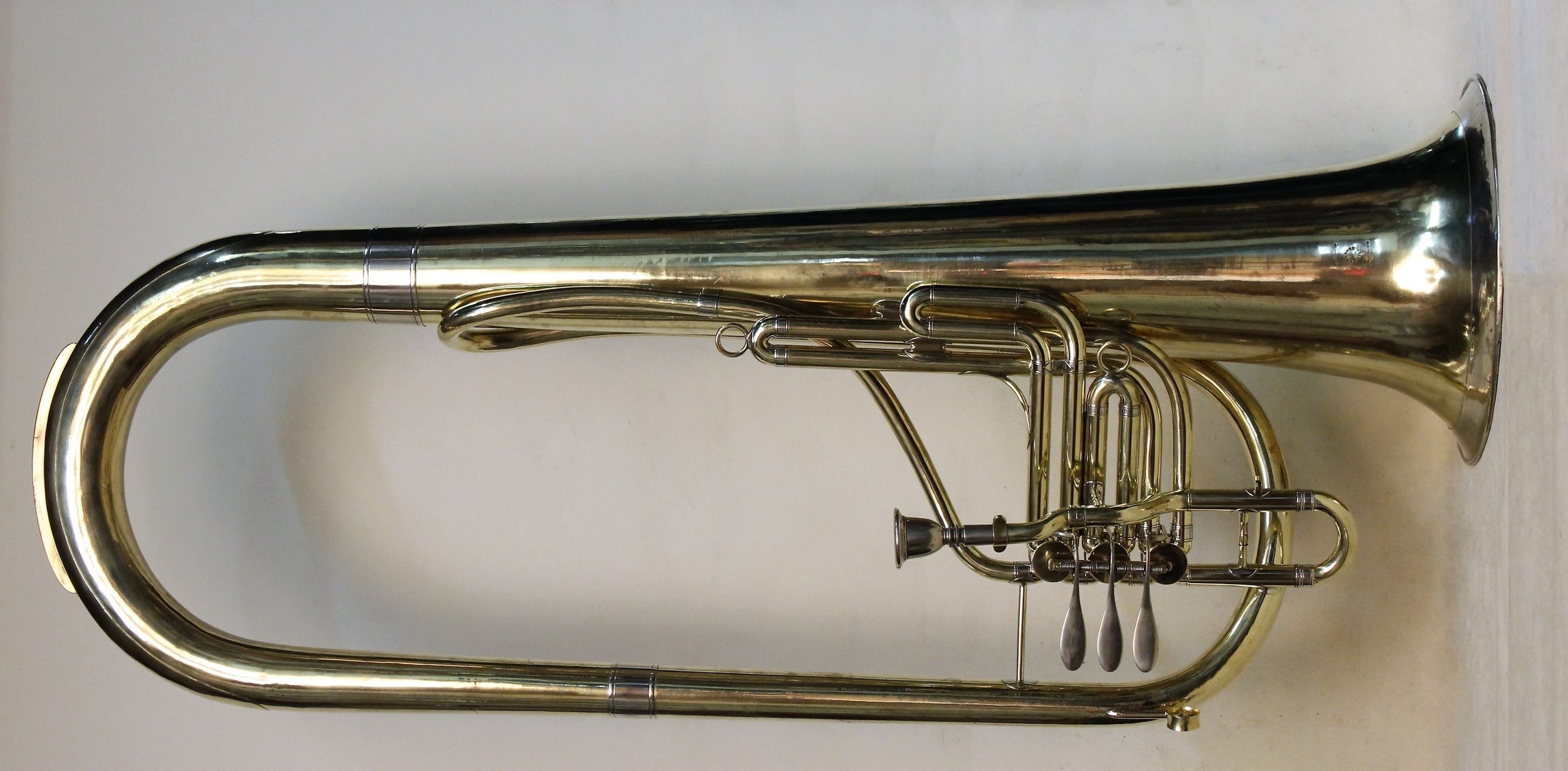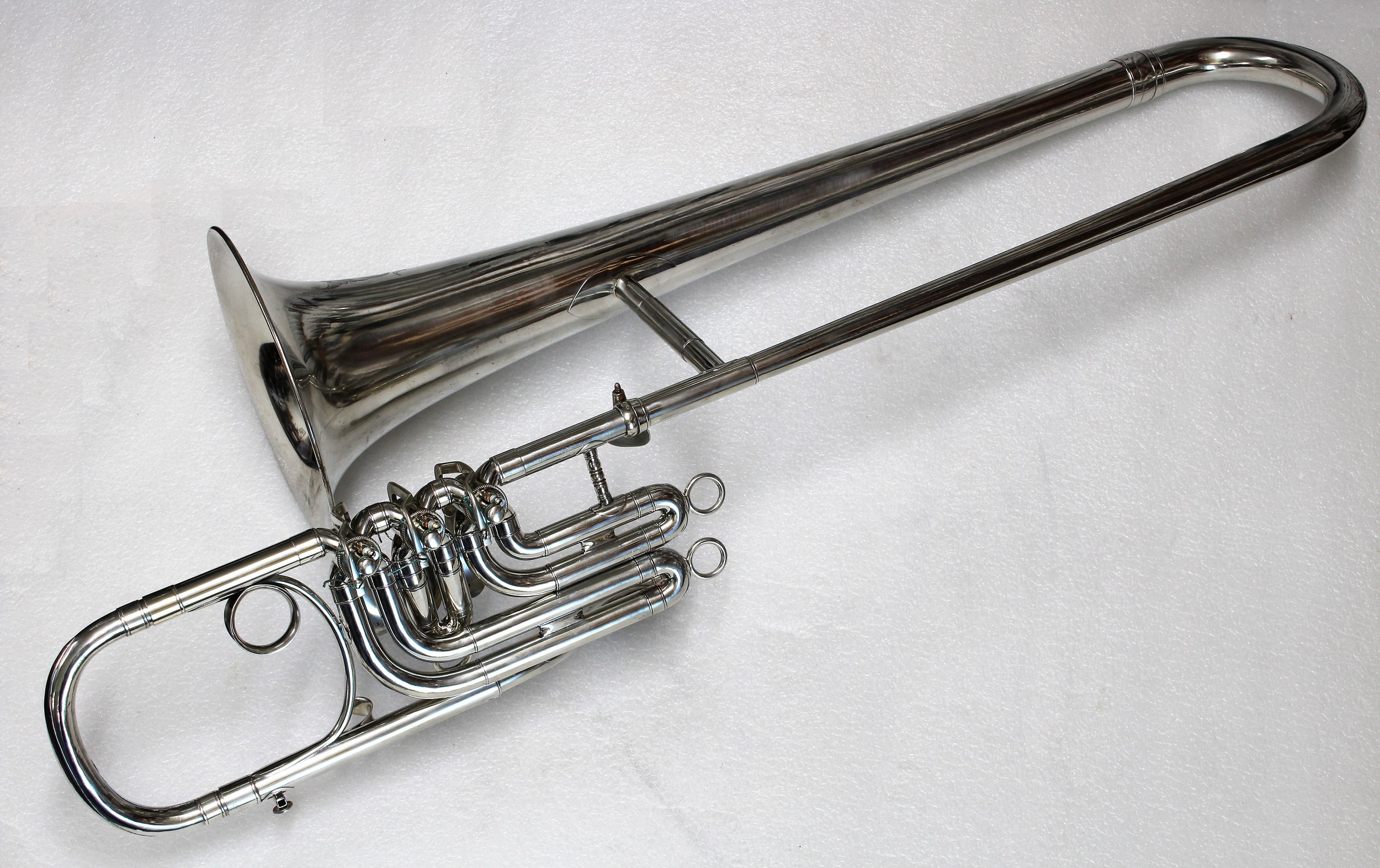Lehnert Centennial Models
By the time that Henry Lehnert had been awarded a patent for his "Centennial" model instruments in 1875, he had been in the brass instrument making business for at least 10 years. It is thought that he had worked for E.G. Wright, Graves & Co. and George Freemantle and was in partnership with B.F. Richardson in Boston, learning the trade before moving to Philadelphia in 1867. He would have seen these makers enter their instruments in various exhibitions and more importantly noticed the growing importance of international universal exhibitions (known to us as World's Fairs in the 20th century) mostly taking place in Europe and England. The third and largest of these shows to be put on in the US was being organized as a celebration of the first one hundred years of our union.
Henry Lehnert introduced this family of military band instruments in time to be promoted during this world wide event and named them "Centennial" for the occasion. The patent covered larger instruments: tenor, baritone and bass, but he also used the name without patent specification on alto and tenors in valve trombone configuration and solo alto horns. I don't believe that I've ever seen soprano instruments with the "Centennial" name stamped on them but it would seem likely that those were made as well. The main advantage of the design in the large instruments is that the weight is carried on both shoulders when in playing position with the sound projected forward. This is presumably an advantage over the helicon that sits on one shoulder only with the sound sent upwards at an angle. In all sizes of instruments, the sound was projected forward.
The Eb tubas were made in two bell sizes as seen below. All instruments could be ordered in either brass or nickel silver as well as with Allen style or standard rotary valves as in this tuba.
The Bb instruments were available in four sizes: tenor, baritone, bass and valve trombone. Pictured below are the baritone and bass.
The rarest of the Centennial family seems to be the altos. Pictured below is an alto configured like a valve trombone, but with most of the length in the bell section in order to allow for more Saxhorn proportions. This is a deluxe version made of nickel silver, with Allen style rotary valves and with decorative engraving. The author doesn’t know if altos were available in other bell sizes.










